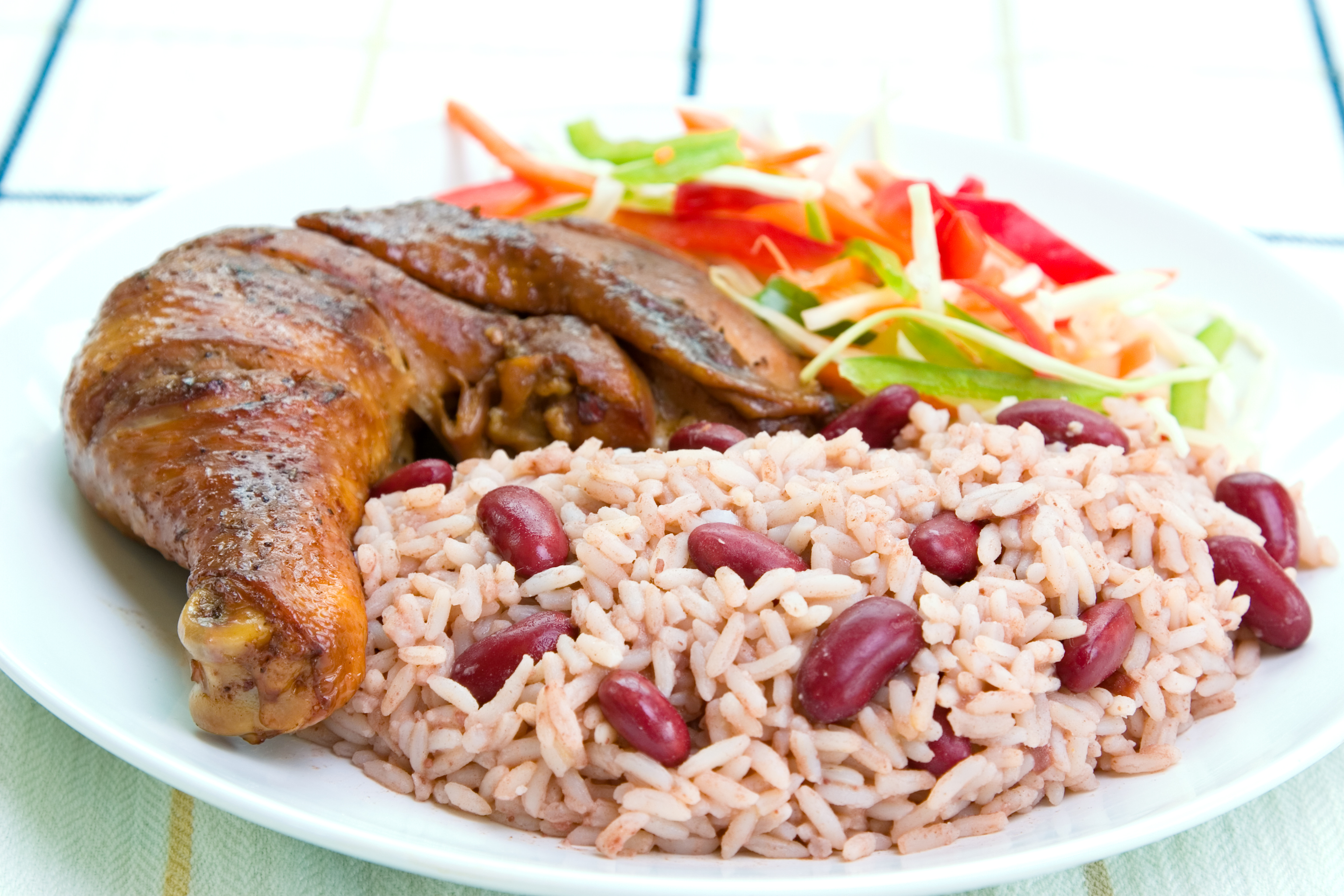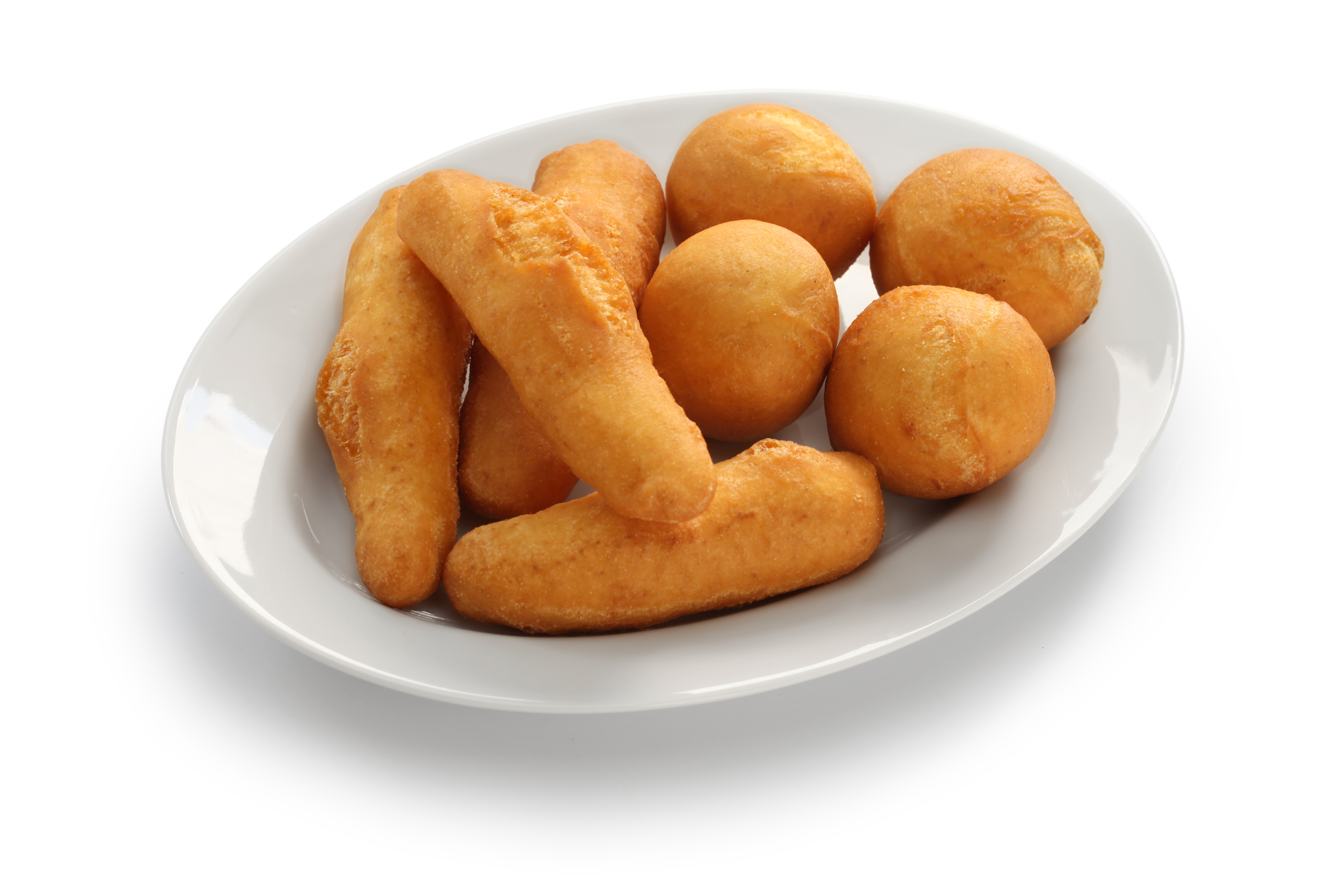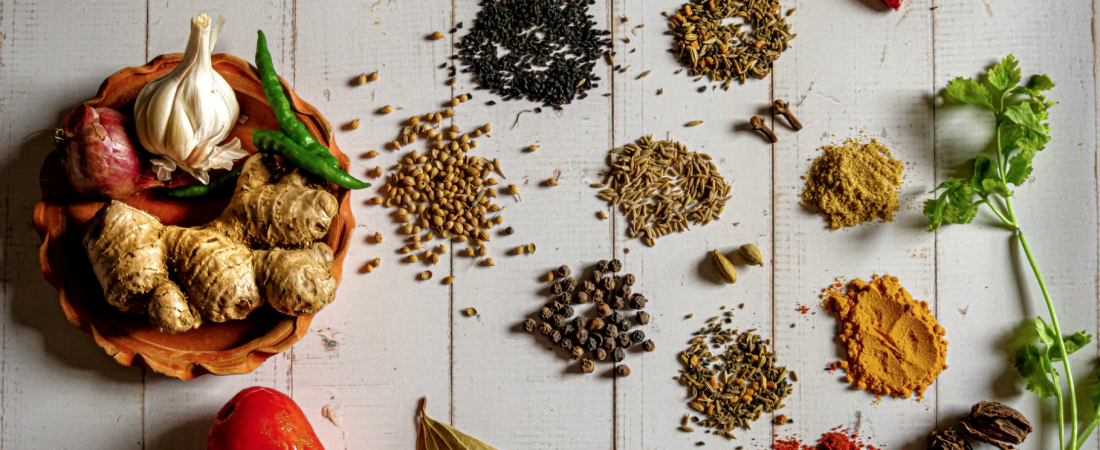'My cultural cuisine is more than comfort food, it’s my history on a plate' Food, Glorious Food by Catherine Ross at Museumand
My cultural cuisine is more than comfort food, it’s my history on a plate.
When I sit down to a plate of chicken, rice and peas I think of my ancestors’ village life where chickens roamed in family yards and wandered freely around the village. A scene often described by my parents and others of the Windrush generation but only ever seen by me on school visits to farms. This relaxed picturesque scene painted by my parents also had another side to it. This was evoked by my mother whenever my siblings and I complained about having to help around the house and do household chores. She would tell us how lucky we were not to have to fetch water in the mornings before going to school, or to collect wood ready for cooking the evening meal, and feed the chickens and other animals. All this work she said taught her generation lessons about self-sufficiency, and the importance of doing their part in keeping the family household going. Contributing to family life in this way was expected to be done without receiving a penny of pocket money. So I was very surprised and envious when my white friends told me if they did “jobs” around the home they got pocket money. I raised this matter with my mother, just the once, and got one of those parental looks that said, if this was ever raised again, there’d be trouble. Family did things to help each other not to get money for doing their duty. A lesson I passed on to my daughters and grandchildren since!

Well back to the chickens. Not having a direct personal experience of Caribbean rural life, I was well into my teens before I discovered that a chicken is not just a chicken, well not to a Caribbean. Waiting in queues at Caribbean food stores you certainly become aware of this. Woe betide a grocery store that doesn’t have hard chicken in the days leading up to the weekend. The sales assistant is likely to suffer the wrath of a Caribbean for this oversight and inefficiency! The customer may ask for a hard chicken or fresh chicken. If they volunteer the information they are going to cook brown chicken, or ask for a hard chicken it means they are going to cook it in a soup or a stew.
Chicken cooked for parties and definitely Carnivals is generally jerked i.e. well-seasoned with scotch bonnet pepper and allspice to create a hot, sweet and spicy taste and left to marinate at least overnight before being cooked in a way that is akin to being barbecued and this is done with fresh chicken.
The chicken used for the famous chicken, rice and peas is best when bought fresh i.e. not refrigerated. Traditionally fried rather than roasted, Sundays wouldn’t be Sundays without a serving of this on a plate for lunch or at dinner time.
Rice which is such a staple in the Caribbean diet has a lot of snobbery attached to it. People boast about washing their rice up to 7 times before cooking it to get rid of the excess starch and any grit that may be in the bag or box of rice. It’s no use telling a die-hard West Indian that modern production methods means you don’t have to wash rice so many times. Traditions are maintained and people still feel it’s the sign of a good cook if the rice has been washed multiple times. Some Caribbean islands will only use white rice, others swear by the brown variety. Many of the Windrush generation still stick to the rice they were first introduced to when taught how to cook rice and the white rice user will not be swayed by being told, brown rice is healthier.
There is a lot of rivalry among Caribbean islands and one point of argument is what is the right “peas” to use for rice and peas. This is the case despite what is commonly referred to as peas sometimes being a variety of bean not pea. As a good Kittitian a person from St Kitts I use Gungo or black-eyed peas. My husband on the other hand is from Jamaica and for him only Red peas (Kidney beans) will do.
But back to family, sharing times as a child. Of all the meals I still have that reminds me of those special family moments when my family ate meals together, at the dining table using knives and forks, (some households only use a fork!!) to eat a plateful of chicken, rice and peas. During the meal we were able to share news, hopes and dreams. We sought and gave advice about problems and were reminded of areas that we need to do better in proving the adage true, a family that eats together stays together. We were assured we would always have the support of the family unit but we were also warned of the expectation not to sully the family name. In these times when so much in life outside the home tells us Black Lives Don’t Matter, as the modern colloquialism states the Caribbean family needs to be even tighter! Family mealtimes are a tradition that will help with this, one that ought to be revived and treasured.
When I curl up on a settee nowadays with a bowl of sprats and Johnny cakes, I recall the stories shared by parents during family nights-in about life back home. We heard tales about my mother learning to become a young woman and one of the things she had to do as part of the growing up process was to be able to plait her sister’s hair. She always grimaced as she recalled her early attempts and her mother’s insistence that the hair was parted with straight lines and each plait was done sufficiently tight to last the school week so her sister’s hair didn’t look unkempt. It was no easy feat apparently! We laughed as we heard that her knuckles were rapped with the comb if the lines were not straight or the plait not sufficiently tidy. It was hard to believe that my mum got smacked. It was hard to believe she wasn’t always good at hair styling for she made it seem effortless during the weekly session of plaiting the hair of her four daughters while we watched Sunday Night at the Palladium on the TV. It was good to know parents weren’t always perfect.
 Daddy would tell us the history of Johnny Cakes and Sprats, and if we heard it once we heard it a hundred times but he told it with such pride that it inspired the same feeling in us. Caribbeans were a strong people that could endure hardships and when they found themselves in a situation where food rations were meagre they could make something tasty and dare I say it even moreish!
Daddy would tell us the history of Johnny Cakes and Sprats, and if we heard it once we heard it a hundred times but he told it with such pride that it inspired the same feeling in us. Caribbeans were a strong people that could endure hardships and when they found themselves in a situation where food rations were meagre they could make something tasty and dare I say it even moreish!
We learned that the history of Johnny Cakes which we as children fought over trying to eat as many as we could and if we had to share one argued that it hadn’t been cut equally had their origins in the days of African enslavement!! Johnny Cakes in their basic form was flour and water and salt kneaded so the consistency was great to bite into when they were fried. If there was cornmeal in the food cupboard then some was added to the flour to create a yellowish dough that gave the Johnny cakes an even better texture and colour. The history behind the Johnny cakes was upsetting but exhilarating. People were forced to go on long journeys to work in the cane fields, or be hired out to other plantation owners found carrying Johnny Cakes, or “Journey Cakes” a great fast food. Easy to carry, easy to munch on, they could last under a hot tropical sun until ready to eat.
Now Sprats “little fish” as we called them as young children when asked what we fancied as a snack was a great family favourite. Having sprats meant we had a whole fish each. The fish seasoned Caribbean style and deep-fried whole, head, bones and all, meant we had fun eating them. Was it going to be the head first or the tail? We wondered whether when parents weren’t watching we could put a whole one in your mouth. It wasn’t good table manners but it was a naughty pleasure we loved!
In 2020 with all its challenges, Caribbean family groups nuclear and extended would do well to maintain the tradition of family mealtimes particularly on a Sunday when most families have more time together. Black British families or dual heritage families may do so nowadays over a traditional English meal of roast beef and Yorkshire pudding, bowls of seasoned pasta, or a spicy curry but more than ever the family of Caribbean descent needs to spend more time together to combat …. Caribbean history, family traditions, stories about school, work and play could be shared. Family bonding can be facilitated and cares of the week dealt with just as they have been for generations when throughout the Caribbean and the Windrush years this was done over a Sunday meal of chicken rice and peas.
Caribbean households may choose to have weekend treats from any of the many fast-food outlets where a great variety of ethnic fare is readily available, but parents should make it a point of duty to have a traditional snack or meal fairly regularly. Cooked together by the family would be great, bought from a Takeaway and enjoyed together would be a real treat. Dining together and hearing stories of cultural traditions would round off the evening perfectly with a sprinkling of the wisdom found in the Anansi and Brer Rabbit stories brought from Africa to the Caribbean and to the UK with the Windrush generation.
Find out more about Catherine Ross, Museumand and how we are working together to raise awareness about Black History Month





























Leave a Comment